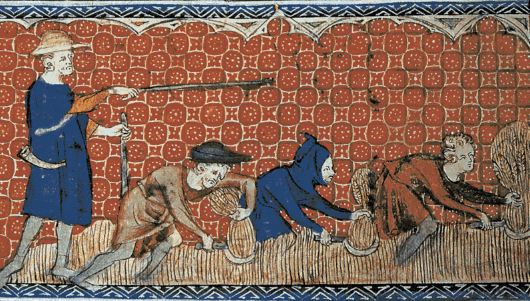It is known that in most of the societies created before the late modern era, the poorest social rank is the peasant. However, for a few societies that existed from the later years of the Roman Empire up to the 19th century, the poorest social rank is considered to be the serf. The difference between a peasant and a serf is almost indistinguishable, but during the Middle Ages, serfs have several disadvantages in society that make them the poorest rank. To learn more about what it is like to be the poorest person in the Middle Ages, here is a guide that shows you the life of the serf during that period.
Origins of Serfs in Medieval Times
It is believed that serfs in the Middle Ages were the successors of those who became slaves during the reign of the Roman Empire. In addition, serfs are also suspected to be freemen who became oppressed by a lord because they wanted to be provided with protection. Because of those possible origins, it could be said that serfs are basically slaves who have a higher position in society, although they are still unable to claim anything as their own.
A village in medieval times would typically have a manor that has a lord with his family and several laborers. Among these laborers are peasants, who are freemen that receive money in exchange for service like giving produce (milk, vegetables, or meat), and serfs, which are workers that primarily stay in the lord’s land to do household chores and other types of labor.
Life as a Medieval Serf
As oppose to peasants that will receive land in exchange for paying it using produce or money, serfs usually don’t get any land from their lord, as it is written in their law that they owe duties to their master before they can attain freedom and free land. These duties that they have to perform in order to “break-even” are farming work, specifically the harder duties like plowing and harvesting crops. In addition, serfs have no right to complain about their work, even if they are given extra duties during the day. Serfs usually work two to three days a week at the lord’s manor, although this could be changed upon the lord’s request, particularly during times where serfs would have to harvest every day.
Besides performing their duties, serfs would have to pay their lord for basically giving him a “job” and a “place to stay,” and the payment would often come into the form of giving produce or money. Since serfs have no ability to earn money or produce, lords are obliged to give them food and shelter, but the amount of food or materials for them to build a home would be lessened in order for the serf to “give back” to the lord.
If a serf does receive land from the lord, the land that is given to him is still not his property, as the land would remain in the lord’s possession for as long as the serf is still unable to receive his freedom. However, even though they are considered the property of the lord, serfs cannot be sold, unlike slaves that can be bought or sold from manor to manor. The reason why serfs cannot be sold to other manors is that the law still indicates that they are freemen, although most of them have voluntarily allowed themselves to be governed by the village’s lord.
While peasants are able to marry anyone in their social rank and send their children to school, serfs aren’t allowed to do any of those without the permission of their lord. Furthermore, they would also not be able to relocate their home to another village or another space in their village without asking the lord for permission first. For more information on the life of different classes of peasants in Medieval England, which includes their diet and leisure time activities, check out our article, Learn About a Peasant’s Life in Medieval England.
Home and Clothing of Serfs
Much like peasants in the village, serfs lived in a simple type of home called a cottage. The walls of the cottage are usually made of wood, daub, and wattle, while the roof is thatched, which means that it is made of bundles of leaves, hay, and reeds. Because thatches are prone to damage after rain, peasants and serfs would often need to replace the materials for the roof with newer ones every now and then.
As for the clothing of the serfs, they typically the same outfit as peasants, although the materials used to create their clothes are less expensive. They would have a blouse that is made of cloth, and then it would fit securely in their body using a belt made of leather. In order to perform rigorous tasks, they would need large boots made of leather to protect their feet against the elements.
Freedom of Serfs
The absolute freedom of serfs from their lords came when the Black Plague ravaged Europe in the 1300s, which was later followed by the Peasants’ Revolt in 1381. In the said event, the rebels wanted to end the system of serfdom in the villages of England and to also reduce taxation in order for the peasants and the former serfs to have a chance of having a better life without being oppressed by the law, the officials, and the King.
The revolt was preceded by the increased value of workers during the Black Plague, as the population of peasants and serfs were heavily affected by the illness due to the lack of funds for medication, thus leading to lords desperately wanting more workers for their manors. Seeing their value and the way they were oppressed by the officials, they sought reform in the system, which they eventually accomplished after the Peasants’ Revolt.


